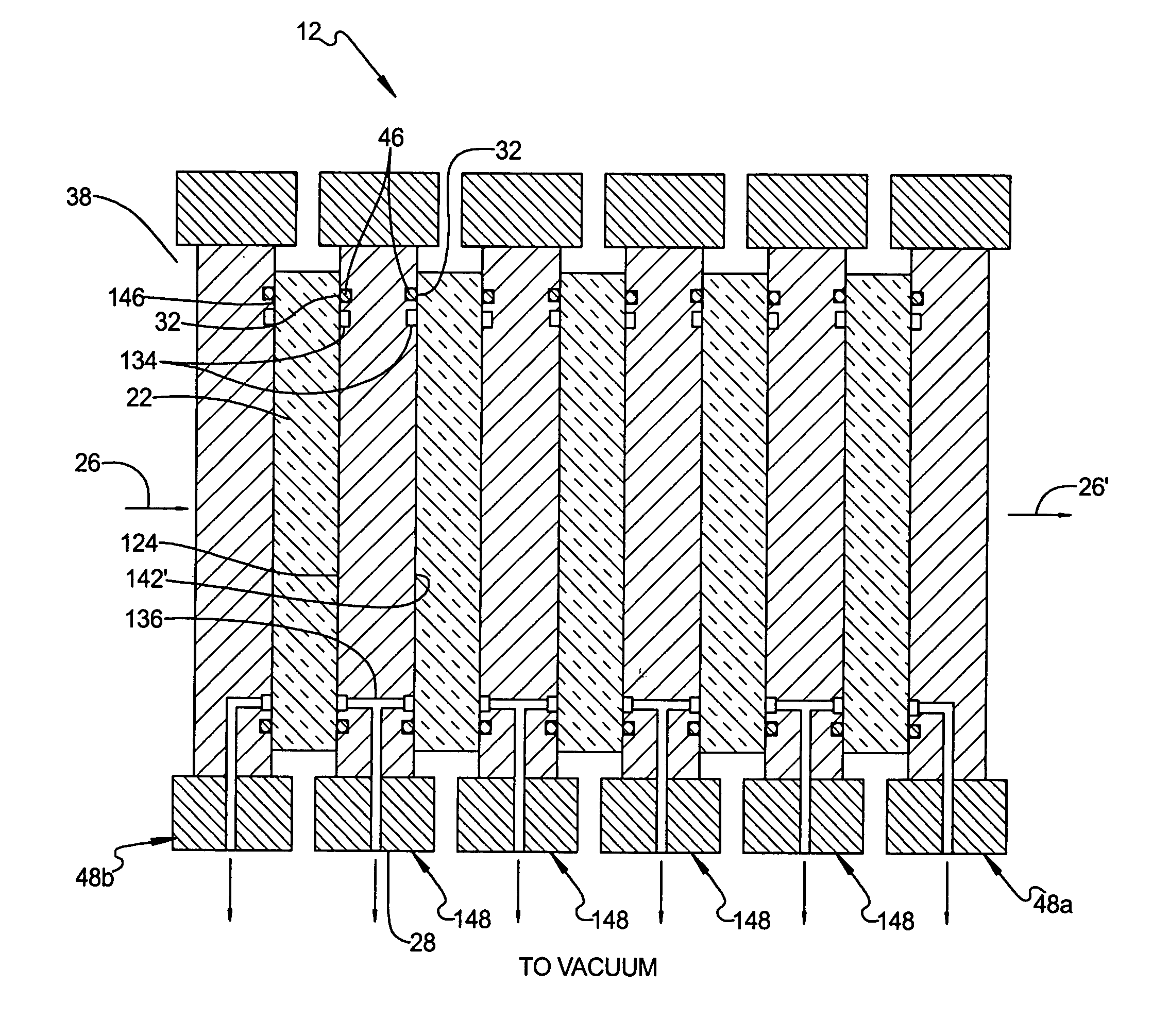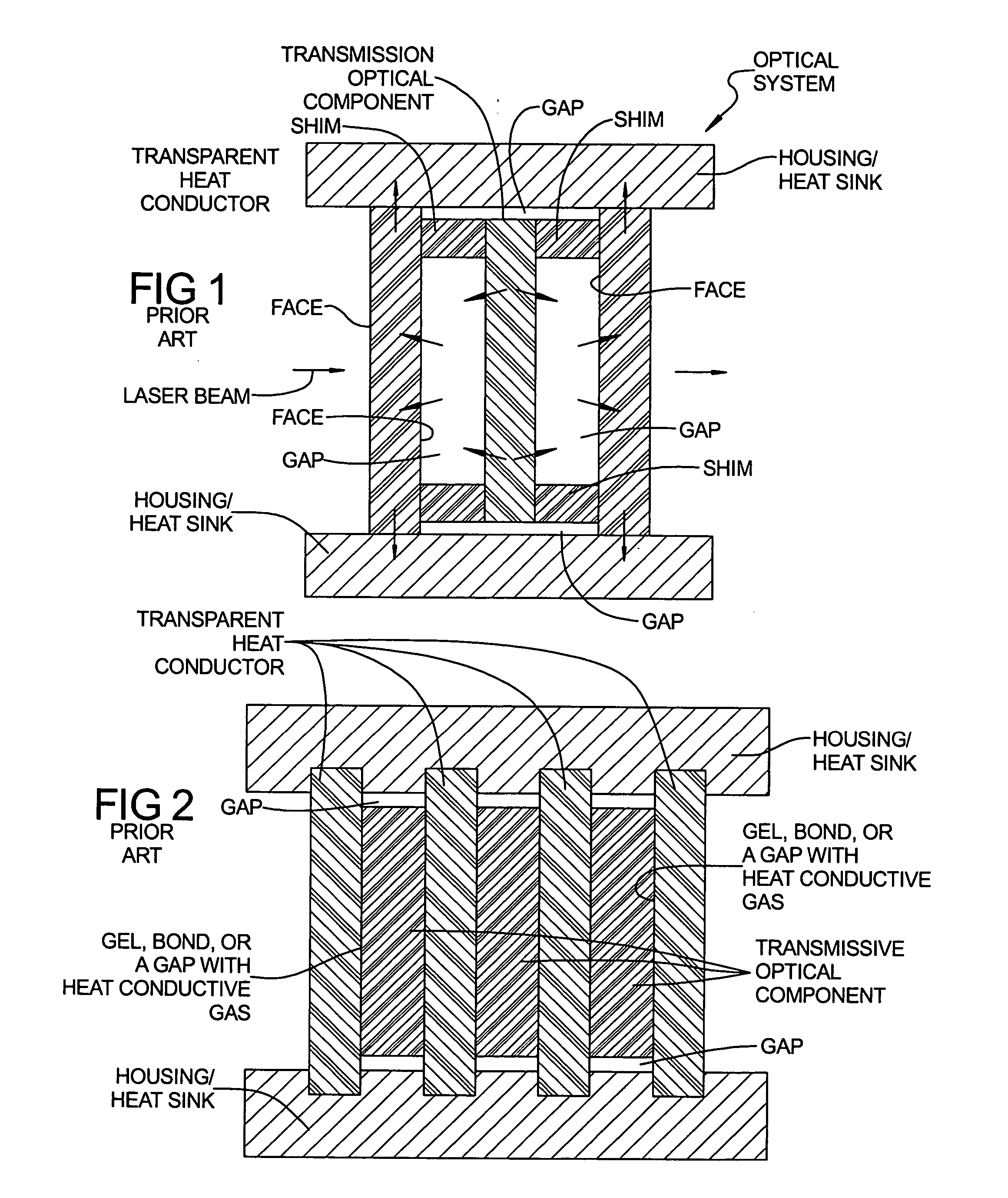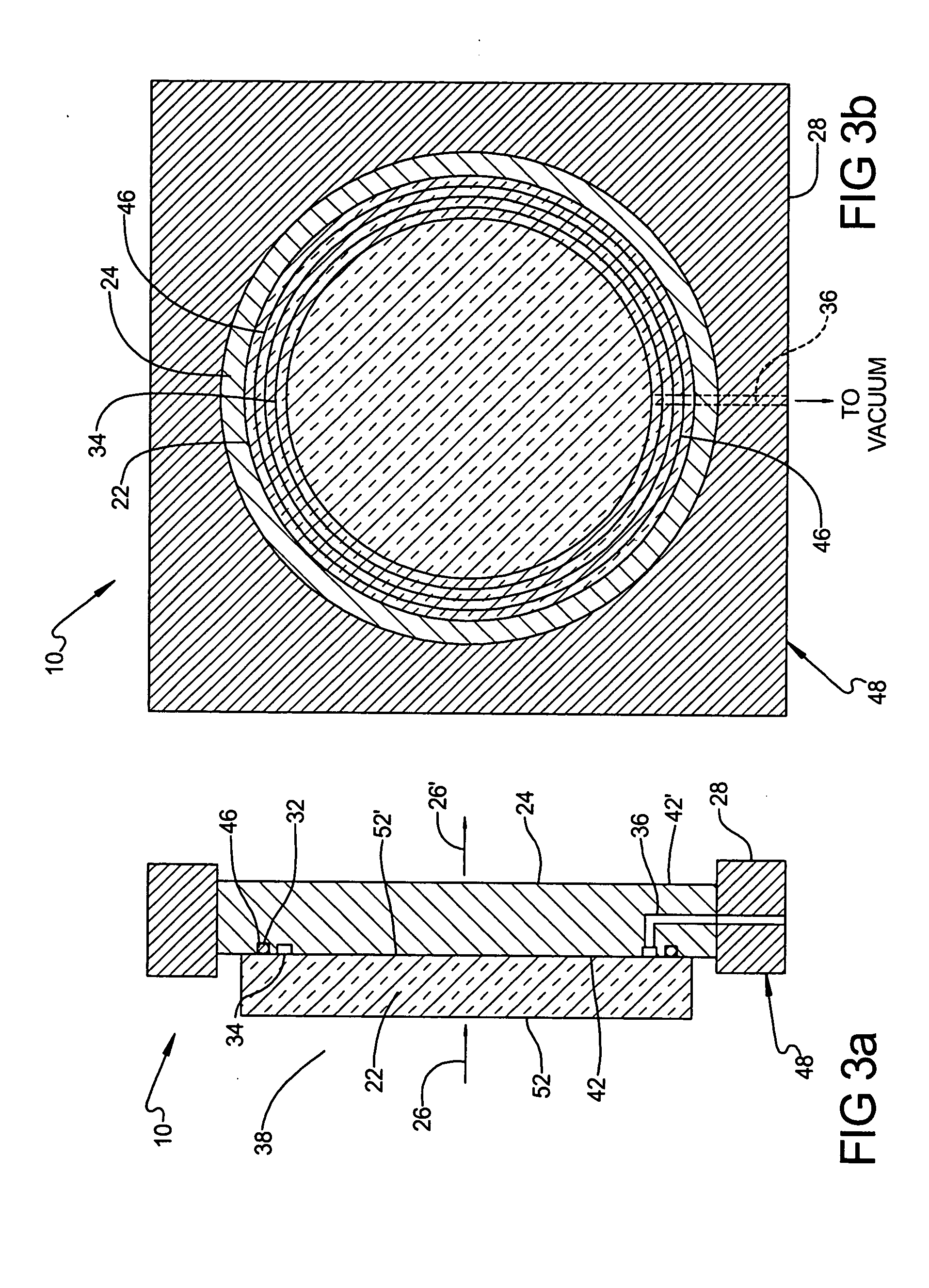Apparatus and method for face cooling of optical components of a laser system
a laser system and optical component technology, applied in the direction of laser cooling arrangements, laser details, instruments, etc., can solve the problems of significant heat load on the transmitting optical components used in high-average power (hap) lasers, thermal aberrations that distort the laser beam, and severely limit the aperture size and power loading allowed in the design of the laser system. achieve the effect of high average power (hap) laser
- Summary
- Abstract
- Description
- Claims
- Application Information
AI Technical Summary
Benefits of technology
Problems solved by technology
Method used
Image
Examples
Embodiment Construction
[0027] The following description of the preferred embodiment(s) is merely exemplary in nature and is in no way intended to limit the invention, its application, or uses.
[0028] The invention discloses a method for cooling optical components of a high average power, solid state laser (HAPSSL), and thus increasing the power-handling capability of the optical components. The various preferred embodiments enable many tactical and strategic laser systems which would otherwise be too costly to manufacture.
[0029] Referring to FIGS. 3a and 3b, there is shown a cooled optical assembly 10 in accordance with a first preferred embodiment of the present invention comprising a transparent optical component (TOC) 22 and a heat sink assembly 48. The cooled optical assembly 10 receives an incident laser beam 26 and transmits it therethrough to form a laser beam 26′. The heat sink assembly 48 further comprises an optically transparent heat conductor (THC) 24 and a heat sink 28. The TOC 22 is a flat ...
PUM
 Login to View More
Login to View More Abstract
Description
Claims
Application Information
 Login to View More
Login to View More - R&D
- Intellectual Property
- Life Sciences
- Materials
- Tech Scout
- Unparalleled Data Quality
- Higher Quality Content
- 60% Fewer Hallucinations
Browse by: Latest US Patents, China's latest patents, Technical Efficacy Thesaurus, Application Domain, Technology Topic, Popular Technical Reports.
© 2025 PatSnap. All rights reserved.Legal|Privacy policy|Modern Slavery Act Transparency Statement|Sitemap|About US| Contact US: help@patsnap.com



